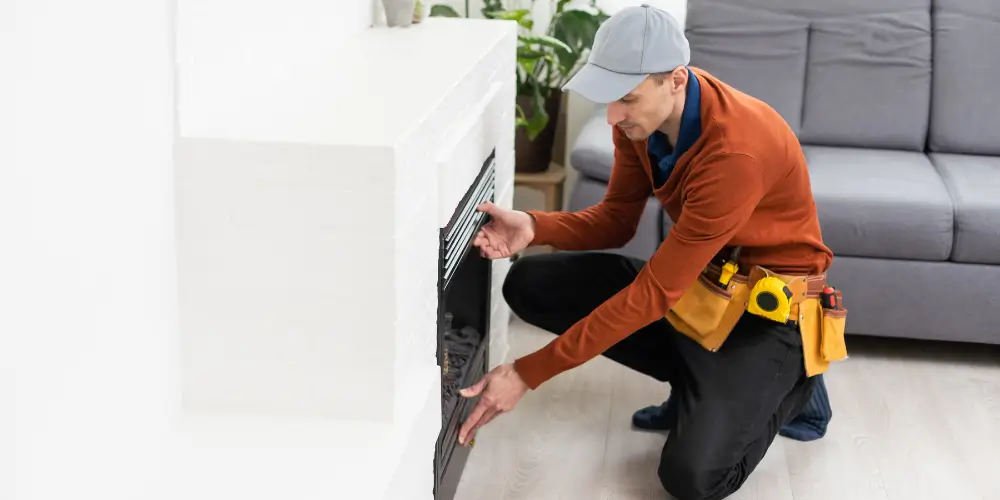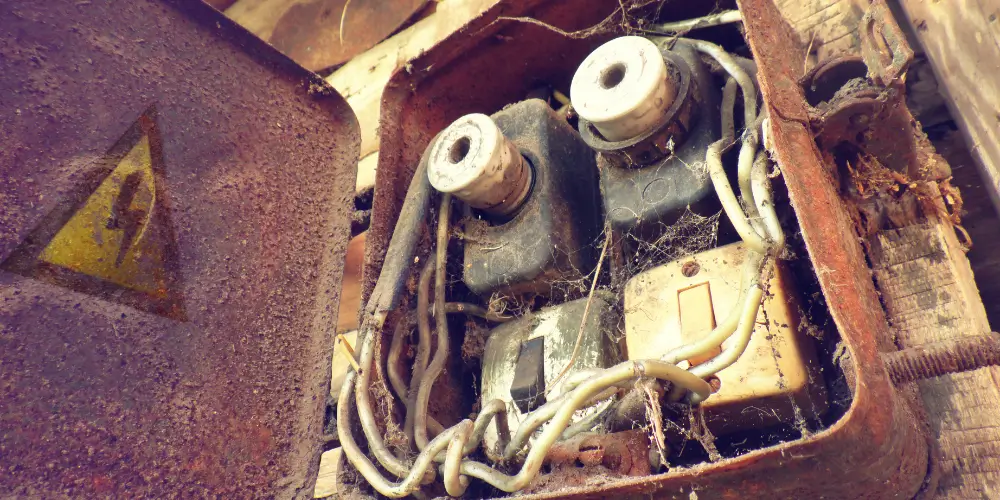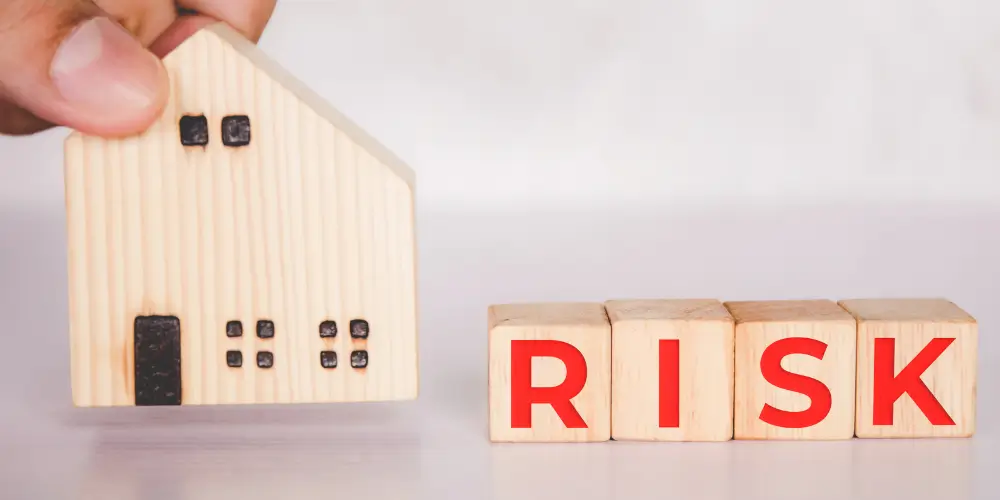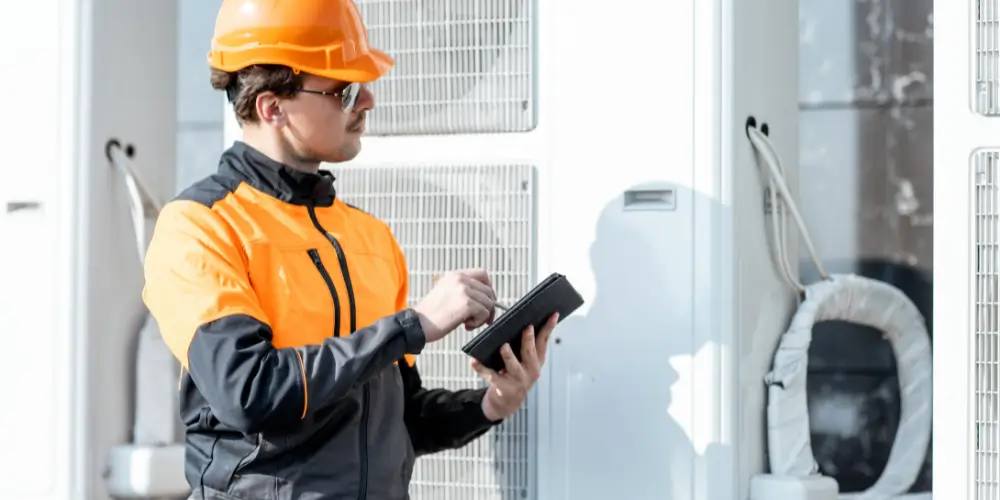The frequency of conducting a Domestic Electrical Installation Condition Report (EICR) depends on several key factors, including the type of occupancy and the property’s age. For owner-occupied homes, it is recommended that EICRs be performed every 5 years for rental properties or upon change of tenancy. This periodic evaluation is essential to ascertain the safety and functionality of electrical systems, ensuring they meet current regulatory standards and effectively identify potential hazards. Understanding the specific timeline and rationale behind these recommended intervals provides a deeper insight into maintaining ideal electrical safety in domestic environments.
Key Takeaways
- Domestic EICRs are recommended every 5 years for owner-occupied homes.
- Rental properties require EICRs every 5 years or with each change of tenancy.
- Older or high-demand electrical systems may necessitate inspections every 5 years.
- Regular EICRs are crucial for maintaining electrical safety and compliance with regulations.
- Delayed or skipped EICRs can increase safety risks and legal liabilities.
Table of Contents
Understanding Domestic EICR Frequency
An Electrical Installation Condition Report (EICR) assesses the safety of electrical systems within domestic properties.
Regular EICRs are critical as they identify potential electrical hazards, ensuring the safety and compliance of home installations with current regulations.
To mitigate risks effectively, the frequency of these assessments must align with the property’s age and the electrical installation’s usage pattern.
What Is an EICR for Domestic Properties?
Electrical Installation Condition Report (EICR) is an essential assessment required for domestic properties to guarantee that all electrical systems and circuits meet current legal safety standards.
The EICR certification process involves a thorough evaluation by qualified electricians who inspect, test and report on the electrical installations within the property. This assessment is pivotal in identifying any deficiencies against the national safety standard for electrical installations (BS 7671).
Homeowner responsibilities underpin the necessity for periodic EICRs; it is their responsibility to confirm that the dwelling remains safe and compliant.
The inspection checklist for an EICR includes examining the condition of wiring, the functionality of circuit breakers, the integrity of connections, and the suitability of control gear. Protective devices are also scrutinised to verify their efficacy in safeguarding against electric shock and fire hazards.
Testing frequency guidelines stipulate that homeowners should undertake EICR assessments at regular intervals or upon change of tenancy. This frequency is typically every 5 years for owner-occupied homes and rented properties. However, this can vary depending on the age and condition of the electrical installation.
Adhering to these guidelines not only confirms compliance with legal requirements but also enhances electrical safety within the home.

Why Regular EICRs Are Important for Home Safety
Regular Electrical Installation Condition Reports (EICRs) are vital for maintaining home safety, acting as a preventive measure against potential electrical hazards. These extensive electrical inspections critically evaluate the safety and efficiency of a property’s electrical installations, identifying defects, deterioration, and non-compliance with current safety regulations.
Such assessments are fundamental in mitigating risks associated with electrical failures, which can lead to severe accidents or fires.
Obtaining an EICR involves methodical scrutiny by qualified electricians who employ precise terminology and technical detail to guarantee a thorough assessment. During these inspections, electricians assess the condition of wiring, protective devices, and connections within the electrical system.
This risk assessment is integral to property maintenance. It confirms that all components meet legal safety standards and are functioning correctly.
Adherence to these safety regulations not only secures the physical safety of residents but also legally safeguards property owners. Regular updates and renewals of EICRs, typically recommended every 5 years for homeowners, are essential in maintaining this security, reflecting changes in national electrical standards and technological advancements.
This practice is a cornerstone of proactive home safety management.
How Often Should a Domestic EICR Be Conducted?
Several factors influence the frequency of conducting a Domestic Electrical Installation Condition Report (EICR), including homeowner responsibilities and statutory requirements for landlords.
It is generally recommended that homeowners undertake an EICR every 5 years or with each change of occupancy.
Landlords, on the other hand, are legally mandated to guarantee an EICR is performed at least every 5 years or with each change of tenancy, whichever occurs first, to comply with safety regulations and maintain the integrity of the electrical installations within their properties.
Recommended Time Frames for Homeowners
Understanding the appropriate frequency for conducting a Domestic Electrical Installation Condition Report (EICR) is essential for homeowners to guarantee ongoing safety and compliance with regulatory standards.
The recommended interval for a domestic EICR varies based on several factors, including the age of the electrical installation, the type of property, and the electrical system’s usage characteristics. Typically, it is advised that homeowners undertake an EICR every five years for an owner-occupied home. However, for properties with significant electrical system demands or older systems, more frequent inspections, potentially every five years, may be prudent.
Homeowners’ responsibilities extend to ensuring that the electrical infrastructure in their homes adheres to current electrical safety norms to mitigate the risks of electrical fires and other hazards.
Regular inspections, as delineated by compliance standards, not only fortify the safety of occupants but also enhance the overall value and functionality of the property.
Adherence to these inspection benefits facilitates the early identification of potential electrical issues, which can be rectified before escalating into more severe problems.
Effective maintenance tips include promptly addressing any faults or recommendations reported in the EICR, thereby sustaining an ideal level of electrical safety and performance.
Landlord Obligations for EICR Frequency
Landlords face distinct responsibilities regarding the frequency of Domestic Electrical Installation Condition Reports (EICR). Securing the electrical safety of rental properties is not merely a legal duty but a critical aspect of property maintenance that affects tenant rights and the integrity of rental agreements.
The regulations stipulate that EICRs must be performed at regular intervals, with specifics varying slightly depending on local laws and the property’s condition.
To clarify, here are the primary obligations of landlords:
- Initial Inspection: Before a new tenancy begins, landlords must guarantee that an EICR is conducted to establish a baseline of electrical safety.
- Regular Updates: EICRs should be updated every five years or with each change of tenancy, whichever comes first. However, this can be more frequent based on the age and condition of the electrical installation.
- Response to Faults: Any faults identified during an EICR must be rectified promptly, adhering to the report’s recommendations to maintain ongoing compliance and safety.
Adhering to these guidelines helps landlords fulfil their responsibilities effectively, safeguarding both their property and their tenants.

Factors That Affect EICR Frequency
The frequency of Electrical Installation Condition Reports (EICR) can be greatly influenced by the age of the electrical installation and any recent renovations or modifications to the property.
Older installations may require more frequent inspections due to potential degradation of components and outdated standards.
Meanwhile, recent property modifications can necessitate reassessments to guarantee compliance with current electrical safety regulations.
Age of the Electrical Installation
How does the age of an electrical installation influence the frequency of Electrical Installation Condition Reports (EICR)?
The age of an electrical installation is a critical factor in determining the frequency of EICRs. Older installations often have outdated components that may not conform to current safety standards, making frequent inspections necessary to identify potential risks.
Additionally, the deterioration of electrical systems over time can considerably impact the overall safety and functionality of the installation. Here are key aspects influenced by the installation age:
- Degradation of Wiring Conditions: Older wiring may not only be out of compliance with modern electrical codes but is also more likely to have insulation breakdown, corrosion, and other age-related damages that can pose serious safety risks.
- Compliance with Updated Safety Standards: Electrical standards evolve, and older systems might not meet new regulatory requirements, necessitating more frequent checks and potential upgrades.
- Necessity for Electrical Upgrades: As technology advances, the need for more capable electrical systems becomes evident, prompting assessments to determine upgrade requirements.
- Property Maintenance Strategies: Properties with older electrical systems require a more rigorous maintenance schedule to prevent failures and guarantee continuous safety.
In essence, the installation age serves as a guide for scheduling EICRs, with older systems demanding more frequent reviews to uphold safety and efficiency.
Renovations or Modifications to the Property
Renovations and modifications to a property considerably impact the frequency of required Electrical Installation Condition Reports (EICR). When a structure undergoes significant alterations, such as room extensions or layout transformations, the electrical system often requires updates to accommodate new loads and functionality. These scenarios necessitate a reassessment of the existing electrical infrastructure to guarantee its capacity and safety align with the new EICR legal requirements.
Renovation impacts are not limited to visible changes; they extend into the domain of electrical upgrades essential for enhancing operational efficiency and safety. Upgrading old wiring, installing additional circuits, and incorporating advanced electrical devices are typical during property renovations. Each of these steps introduces complexities that might affect the overall electrical safety and, consequently, require verification through an updated EICR.
Moreover, wiring changes and safety enhancements made during renovations must adhere to current electrical standards. Compliance updates are critical, as they guarantee that the renovated system conforms to legal safety norms.
Failure to execute these updates can lead to electrical failures or hazards, underlining the importance of integrating EICR as a pivotal component of the renovation process. This integration not only guarantees compliance but also enhances the safety and functionality of the property’s electrical installations.
EICR Requirements for Rental Properties
In the domain of rental property management, the Electrical Installation Condition Report (EICR) mandates distinct compliance protocols for private landlords when compared to owner-occupied residences.
These regulations stipulate that landlords must guarantee that their properties are inspected and tested by a qualified electrician at regular intervals to certify electrical safety.
The frequency and rigorousness of these inspections often surpass those required for owner-occupied homes, reflecting a heightened duty of care towards tenant safety.
Compliance Rules for Private Landlords
Understanding and adhering to the Electrical Installation Condition Report (EICR) requirements is essential for private landlords to ensure compliance with safety regulations.
Guiding through these mandates not only underscores landlord responsibilities but also safeguards tenant rights. The fear framework is designed to guarantee electrical safety through methodical inspection procedures and outline potential compliance penalties for non-adherence.
Key aspects of compliance include:
- Periodic Inspection: Landlords must arrange for electrical inspections at regular intervals, typically every five years or at each change of tenancy.
- Certified Professionals: Only qualified electricians registered with an approved scheme should conduct these inspections, assuring reliability and precision in the evaluation of electrical systems.
- Documentation and Reporting: After inspection, a detailed report should be provided, documenting any defects or deviations from the standard codes. This serves as a compliance record and a guide for necessary rectifications.
- Rectification of Faults: Any electrical safety risks identified during the inspection must be rectified promptly to comply with legal standards and protect tenants from potential hazards.
Adhering to these protocols not only fulfils legal obligations but also enhances the safety and integrity of rental properties, thereby fostering a responsible rental market.

Differences Between Owner-Occupied and Rental Homes
Understanding the Electrical Installation Condition Report (EICR) requirements for private landlords sets a clear baseline for rental property compliance. These mandates are essential in distinguishing the obligations that exist between owner-occupied and rental homes.
For owner-occupied residences, the frequency and extent of EICR are often influenced by owner discretion and the perceived owner-occupied advantages, such as long-term maintenance of property value. However, rental homes necessitate rigorous adherence to standardised safety protocols to address tenant safety concerns directly.
Rental home responsibilities extend beyond typical property maintenance, emphasising the need for regular inspections to guarantee tenant safety and compliance with legal standards. The age of the electrical system in these properties often necessitates more frequent reviews, as older systems may pose increased risks.
Consequently, property maintenance tips for landlords include scheduling EICRs at intervals advised by the latest regulations or even more frequently depending on the electrical system’s age and usage patterns.
This analytical approach underscores the importance of proactive electrical safety checks in the rental sector. They serve not merely as a legal formality but as a vital component of tenant safety and property integrity.
Signs You Need an EICR Sooner
Identifying the need for an Electrical Installation Condition Report (EICR) ahead of the standard schedule is essential for maintaining electrical safety and functionality.
Symptoms such as frequent power interruptions or evidence of electrical faults can indicate underlying issues, often related to overloaded circuits or ageing infrastructure.
Immediate assessment through an EICR can diagnose these problems, ensuring compliance with safety standards and preventing potential hazards.
Electrical Faults or Frequent Power Cuts
In households where electrical faults or frequent power cuts occur, it is vital to consider scheduling an Electrical Installation Condition Report (EICR) at an earlier interval than typically recommended.
The presence of these issues often indicates underlying problems that can compromise the safety and functionality of your electrical system. Recognising these signs and responding promptly can mitigate risks and guarantee compliance with safety standards.
Key indicators that warrant an expedited EICR include:
Persistent power surges
These sudden spikes in electrical voltage can damage appliances and indicate instability in your home’s electrical infrastructure.
Recurring circuit overloads
Frequent tripping of circuit breakers or blown fuses are clear signs of circuit overloads that necessitate immediate.
Significant increase in electrical incidents
Any uptick in minor electrical mishaps could be symptomatic of larger, systemic issues that require professional
assessment.
Outdated compliance with current
Regulation
If previous home inspections have noted borderline or non-compliant issues, it’s vital to conduct a thorough EICR to address potential hazards.
Incorporating regular and thorough electrical maintenance through EICRs enhances safety and optimises the operational efficiency of your home’s electrical system.

Overloaded Circuits or Old Wiring
Overloaded circuits and ageing wiring systems are critical indicators that your home may require an Electrical Installation Condition Report (EICR) more urgently than the standard schedule suggests.
Detecting these issues early is paramount for maintaining electrical safety and preventing hazardous conditions. Overloaded circuits occur when too many devices draw power simultaneously, exceeding the circuit’s capacity. This can lead to frequent tripping of circuit breakers and, in severe cases, the risk of electrical fires.
Old wiring, particularly in structures over 25 years old, may not comply with current electrical standards and could be incapable of handling modern electrical loads efficiently. Such wiring cannot often withstand power surges, leading to potential damage to electrical appliances and an increased risk of short circuits.
The insulation on older wires can degrade, exposing live wires and creating a significant safety hazard.
Regularly scheduled EICRs can identify and mitigate these risks by evaluating the condition of your electrical system and recommending necessary upgrades or repairs.
For homes exhibiting signs of overloaded circuits or ageing wiring, a more frequent EICR is advisable to guarantee ongoing compliance with safety regulations and to protect the household from potential electrical failures.
EICR Frequency for New-Build Homes
In the context of new-build homes, initial electrical testing is mandated before occupancy to comply with national safety standards.
Subsequently, the first Electrical Installation Condition Report (EICR) should typically be scheduled no later than 5 years from the date of initial testing or upon change of ownership.
This timeline guarantees that any degradation or faults in the electrical system are identified and addressed promptly to maintain safety and compliance.
Initial Testing Requirements
Understanding the initial 5 years electrical testing legal requirement. Electrical Installation Condition Reports (EICR) in new-build homes is essential for guaranteeing long-term electrical safety and compliance with current regulations. These requirements are meticulously outlined to guarantee that every aspect of a home’s electrical system is up to standard before occupancy.
- Initial Inspection Criteria: The first step involves a thorough review of the electrical installation against the national safety standards. This includes checking the adequacy of earthing and bonding, the suitability of switchgear, and the integrity of connections.
- Testing Equipment Standards: Only calibrated and certified testing equipment should be used to measure circuit continuity, insulation resistance, and the functionality of residual current devices.
- Electrical Safety Guidelines: Adherence to the latest electrical safety guidelines is mandatory. This includes verifying that all electrical components meet specified ratings and are appropriately protected against external influences.
- Homeowner Responsibilities: Homeowners must guarantee that the inspection is conducted by a qualified electrician who provides detailed inspection documentation, fulfilling both homeowner responsibilities and inspection documentation requirements.
These measures are vital in mitigating risks associated with electrical faults, which can lead to severe consequences if not properly managed from the outset.
When to Schedule the First EICR
While initial testing guarantees that new-build homes meet safety standards at the time of construction, it is equally important to plan the first Electrical Installation Condition Report (EICR). The initial EICR should be scheduled no later than when the property reaches five years of age. This timing aligns with the guidance provided by electrical safety standards, which recognise the potential for environmental and usage-based wear and tear that may not be immediately evident.
Homeowner responsibilities include maintaining an awareness of the condition of electrical installations and confirming compliance with safety guidelines. Delaying the first EICR beyond the recommended period can lead to undetected hazards, compromising the safety of the occupants.
Effective EICR scheduling tips include setting reminders for future inspections at the time of the initial report and consulting with a certified electrician who can provide detailed insights into the property’s specific needs based on its usage patterns and environmental factors.
Adherence to these guidelines confirms not only compliance with legal safety compliance measures but also enhances overall electrical safety awareness. It protects the integrity of the home’s electrical infrastructure and confirms a safe living environment for all occupants.
Consequences of Skipping Regular EICRs
Neglecting regular Electrical Installation Condition Reports (EICRs) in domestic settings can markedly heighten safety risks, including increased potential for electrical fires and system failures.
In addition, homeowners may face severe legal and insurance consequences, as compliance with the latest electrical safety standards is often necessary for valid insurance claims and regulatory compliance.
Consequently, the omission of periodic EICRs compromises a residence’s physical safety and exposes homeowners to substantial financial and legal liabilities.

Safety Risks in Domestic Properties
In the domain of electrical safety, the omission of regular Electrical Installation Condition Reports (EICRs) in domestic properties can lead to severe risks. Skipping these assessments, which are essential for confirming the safety and functionality of a property’s electrical systems, undermines vital preventative measures and can result in dire consequences.
The risks associated with neglecting regular EICRs include:
- Increased electrical hazards: Faulty wiring, overloaded circuits, and deteriorated insulation may go unnoticed without inspection, greatly raising the risk of electrical shocks or fires.
- Compromised home safety: The safety of occupants is at risk when potential electrical issues are not identified and rectified timely. This can lead to accidents that are otherwise preventable with routine checks.
- Ineffective risk assessment: Regular EICRs facilitate a structured approach to identifying and mitigating risks. Lapses in these checks impede the ability to assess current or emerging hazards effectively.
- Non-compliance with safety regulations: Failing to conduct EICRs can result in violations of local and national electrical safety standards, potentially leading to legal repercussions and risking the insurance coverage.
Therefore, maintaining a schedule for regular EICRs is not merely a regulatory formality but a vital component of ensuring long-term safety in domestic environments.
Potential Legal and Insurance Issues
Numerous domestic property owners underestimate the legal and insurance repercussions that can arise from forgoing regular Electrical Installation Condition Reports (EICRs). Skipping these assessments can lead to severe legal ramifications due to non-compliance with safety regulations.
Importance of EICR in electrical accidents Homeowner liability increases greatly when electrical systems are not certified as safe, potentially resulting in legal action if an accident occurs due to neglected electrical maintenance.
From an insurance perspective, the absence of up-to-date EICRs can complicate claims processing after electrical mishaps. Most insurance policies stipulate that the homeowner must maintain the property in compliance with current safety standards.
Failure to provide a recent EICR can be seen as negligence, leading insurers to deny claims related to electrical faults. This not only exposes homeowners to potential financial burdens but also risks voiding their policy coverage altogether.
Ensuring electrical compliance through regular EICRs enhances property safety and fortifies legal and financial security. Homeowners must recognise that these periodic checks are pivotal in safeguarding against the intricate web of liability and insurance disputes that can ensue from overlooked electrical safety obligations.

Comparing Domestic EICR Frequency to Commercial
In comparing the frequency of Electrical Installation Condition Reports (EICRs) between domestic and commercial properties, it is evident that commercial environments typically require more frequent evaluations due to higher electrical load demands and greater public safety considerations.
Conversely, domestic properties often benefit from longer intervals between inspections as they generally experience less electrical wear and tear.
This distinction is essential for property owners and managers in allocating resources effectively for electrical safety compliance.
Key Differences in Inspection Timelines
Understanding the key differences in inspection timelines between domestic and commercial Electrical Installation Condition Reports (EICRs) hinges on recognising the varying demands and risks associated with each environment. The frequency and depth of inspections are dictated by use patterns, occupancy levels, and the inherent electrical load demands, which differ markedly between homes and commercial buildings.
Inspection Procedures
Commercial environments generally involve more complex electrical systems, necessitating rigorous and detailed inspection procedures compared to domestic settings.
Inspection Costs
Due to the complexity and scale of commercial electrical systems, the costs associated with commercial EICRs are typically higher. More extensive labour and specialised tools elevate the overall expense.
Inspector Qualifications
Commercial inspections often require inspectors with advanced certifications and experience in industrial-grade systems, contrasting with the more generalised qualifications sufficient for domestic inspections.
Inspection Tools
The tools required for commercial inspections are typically more sophisticated, reflecting the higher power and complexity of commercial electrical systems. This includes advanced circuit analysis and thermal imaging equipment.
These distinctions guarantee that the inspection reports generated are appropriate to the scale and complexity of the installation, guaranteeing safety and compliance with regulatory standards.
Why Domestic Homes Have Longer Intervals
Due to the less frequent usage of high-capacity electrical equipment and simpler system configurations, domestic homes typically have longer intervals between Electrical Installation Condition Reports (EICRs) compared to commercial properties. Check our blog post on how often should EICR be carried out on commercial property.
In commercial settings, the electrical systems are subject to more intense operational demands, necessitating more frequent evaluations to adhere to safety standards and mitigate risks associated with system failures.
In contrast, residential environments generally exhibit lower electrical load demands and less complex infrastructural setups. This reduced complexity not only diminishes the risk of rapid degradation but also extends the period between necessary inspections.
Homeowner awareness plays a significant role in maintaining this schedule. Educating homeowners about the signs of potential electrical issues can further safeguard against unexpected system failures, thereby aligning with the core objectives of electrical maintenance.
Moreover, the inspection benefits in domestic settings are enhanced by less frequent yet thorough checks that focus on vital aspects tailored to residential safety requirements.
Compliance education for homeowners is essential to ensuring that these inspections are conducted within the recommended intervals. This will uphold the integrity of the home’s electrical infrastructure while optimising the cost and effort involved in maintaining it.
How Long Does a Domestic EICR Inspection Take?
Determining the duration of a domestic Electrical Installation Condition Report (EICR) involves several factors, primarily the size and complexity of the electrical system.
The inspection duration can vary considerably, but a thorough understanding of the elements involved can provide a clearer estimate. An experienced electrician will consider the following aspects:
- Number of Circuits: More circuits typically mean longer inspection times, as each must be individually tested and assessed.
- Accessibility of Electrical Components: Difficulty in accessing junction boxes, consumer units, and other electrical components can extend the duration.
- Age and Condition of Installation: Older or poorly maintained systems may require more time for fault detection and circuit verification.
- Documentation and Previous Inspections: The availability of accurate wiring diagrams and records from previous inspections can expedite the process.
Professionals preparing for an EICR should follow specific preparation tips to promote efficiency. This includes reviewing the inspection checklist thoroughly and making sure all necessary tools and instruments are ready.
Common questions from homeowners often revolve around the expected downtime and safety during the inspection, which should be addressed prior to commencement.
The post-inspection steps are critical; they involve documenting any defects, categorising them according to severity, and advising on necessary remedial actions.
The final report should provide a detailed and actionable plan for promoting the electrical system’s safety and compliance with current standards. Understanding these stages and requirements helps in effectively anticipating the effort and time involved in completing a domestic EICR.
Frequently Asked Questions
Can Homeowners Perform an EICR on Their Property?
Homeowners generally should not perform EICRs on their properties due to the complexities of the EICR certification process, electrical safety standards, and the benefits of professional EICR adherence to DIY EICR guidelines and homeowner responsibilities.
Are There Any Discounts Available for Repeat EICR Customers?
Many service providers offer repeat customer discounts, loyalty program benefits, and service package deals. Referral incentives and seasonal promotions may also be available, rewarding consistent patronage with financial advantages and enhanced service options.
What Should a Homeowner Do if They Fail an EICR?
If a homeowner fails an EICR, they must address safety concerns by undertaking prescribed remedial actions. Understanding failure implications, meeting legal obligations, and obtaining cost estimates for necessary repairs are essential to guarantee compliance and safety.
Is There an Ideal Time of Year to Schedule an EICR?
To optimise EICR effectiveness, scheduling during spring mitigates risks associated with seasonal electrical issues and adverse weather impacts. Analysis indicates that avoiding busy winter periods guarantees thorough inspections, aligning with ideal inspection timing strategies.
How Can a Homeowner Prepare for an Upcoming EICR?
To prepare for an EICR, homeowners should compile relevant documentation, review an extensive EICR checklist, address common issues beforehand, verify the technician’s qualifications, and utilise strategic scheduling tips to guarantee a thorough and efficient review process.

